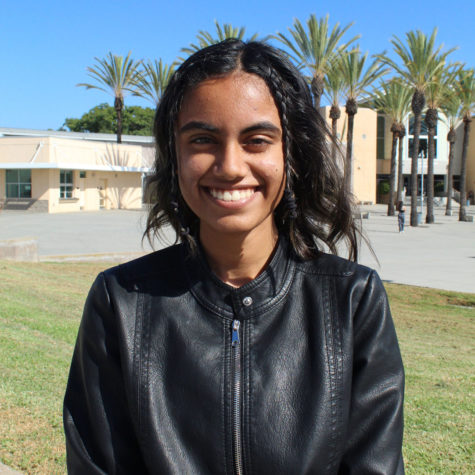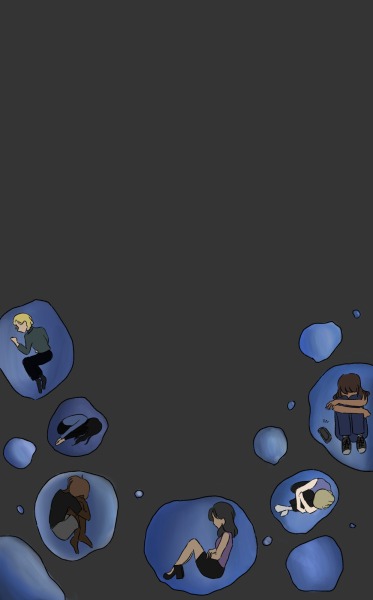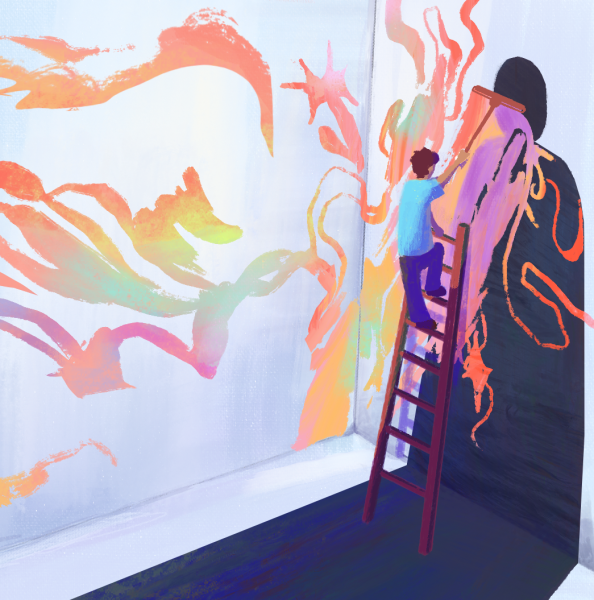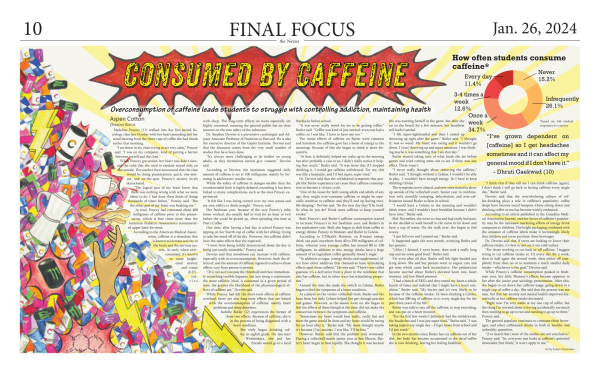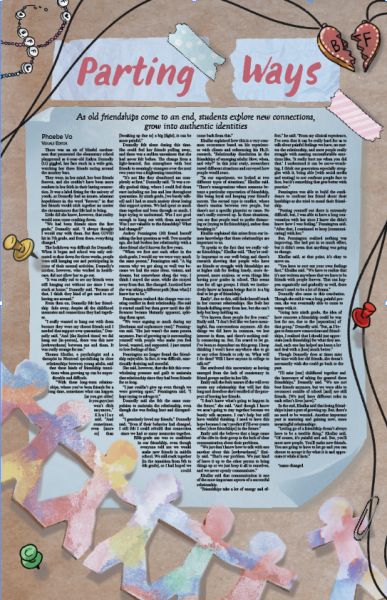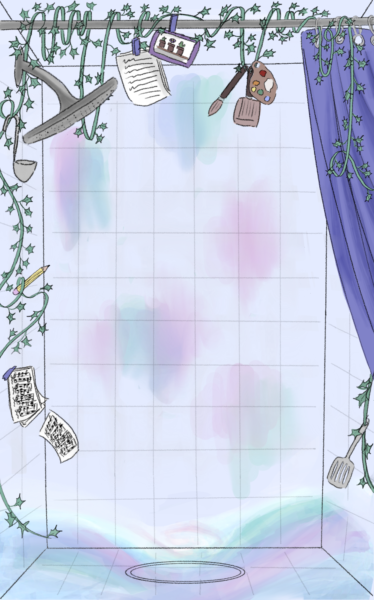Words Under Fire
A local look into the nationwide movement to restrict access to books in schools

Tamara Deverell was surprised. After stumbling upon the book Gender Queer through her friend’s Facebook post about book bannings in PUSD, she was concerned to see numerous graphic images of sexual activity, nude male bodies, and genitals. The book was available in PUSD libraries—as a parent of a high school junior, Deverell said she felt that it was the district’s responsibility to protect students from material some found to be pornographic.
“For me, [LGBTQ+ sex] is not the issue,” Deverell said. “The issue is the graphic depiction of sexual acts in a child-friendly, comic-style format combined with free and easy access to it in the PUSD school libraries.”
Although a few parents close to Deverell were vehemently opposed to banning books, Deverell said she believed books that are challenged for pornographic content should at least be reviewed, voicing her concerns as a member of the School Site Council.
“I hadn’t read the book myself, as the format [graphic novels] didn’t interest me, but I’m not sure whether it’s still age-appropriate content,” Deverell said. “For seniors who are 17 or 18, I wouldn’t really have an issue with it. But there’s a big difference between a freshman who’s 13 or 14 and a senior. Before we jump on this saying it’s wrong to review it, I think it’s absolutely appropriate and necessary to review things.”
While an individual’s perception of what is or is not age-appropriate is mostly subjective, Deverell said that generally speaking, she would draw the line at images.
“I know many of the books read in school have content like this [sexual content],” Deverell said. “But they don’t have images that accompany them. For example, Maya Angelou’s I Know Why the Cagebird Sings includes explicit content about rape, but I don’t disapprove of that being within the school curriculum.”
Ultimately, Deverell said she appreciates how the district considers parent input in reviewing the books.
“Some people have been saying that absolutely anything and everything can be in the school library, but my opinion is it shouldn’t,” Deverell said. “We have a review process, and I support that. If the district finds that the book [Gender Queer] should remain in the libraries, I would respect that decision as long as the guidelines as to what is and is not appropriate are clearly defined.”
When a formal challenge is brought to a staff member within PUSD, the complainant is provided with a Reconsideration of Library Materials form; the person who was believed to have filed a formal challenge against Gender Queer did not respond to a request for an interview. The book is then distributed to members of the District Review Committee.
The committee consists of three teachers (one each at the elementary, middle, and high-school level), one secondary teacher librarian, one elementary library media technician, one school site administrator, one district administrative staff member, parents from elementary, middle, and high-school levels, and a total of four students (two in middle-school and two in high-school).
Aly* is one of the two high-school students on the committee, which just finished reviewing Gender Queer in November. The committee is given 15 days to read the book in question, along with the complaint filed. When they convene, they discuss the book and its reviews.
The committee’s final decision is one of the following: the book is continued for general circulation in libraries or class assignments, the book is circulated or assigned only after parental consent is obtained, or the book is removed from circulation and assignments.
Throughout the district’s history, no book has been removed from circulation and assignments, and the committee has, on only a few occasions, decided to require parental consent.
When reviewing books, the age-group that publishers assign books to is taken into account. However, between middle-school, high-school, and an adult audience, the distinction can be difficult to make.
“There are certain high-school books [in middle-school libraries] that middle-schoolers are allowed to read, so the line gets kind of blurry,” Aly said. “For example, [Fun Home] was listed [by the publisher] as an adult audience, but on booklists it’s grades 9 through 12. When you’re dealing with books [containing sexual content] especially, it’s a bit controversial for the pictures. I don’t think there’s a lot of dispute over the content, but really, just the pictures and what kind of eyes should be looking at those.”
When coming to a decision, the committee strictly abides by guidelines known as the Library Bill of Rights, which was established by the American Library Association.
“There are some key points I look towards in the Library Bill of Rights,” Aly said. “For example, one states that books should be provided for the interest, enlightenment, and information of all people in the community. They shouldn’t be excluded because of the views of those that contributed to the book’s creation. The general idea of [the Library Bill of Rights] is that books should be widely available to everyone of all backgrounds, but the line is drawn if a book is genuinely promoting harm to someone.”
Along with the Library Bill of Rights, the committee uses AR 6163.1(a), an instructional district policy on the selection of school library materials. Books “presenting incidents on sex” are subjected to a test of literacy merit. As long as the incidents are not sensational or over-dramatic, the policy states that sexual incidents alone cannot automatically disqualify a book from being selected on library shelves.
Similarly, for obscenity, vulgarity, and profanity, the policy states that although such elements are not desirable, “if the use of profanity in some mature fiction is necessary for the development of character or situation, opens a clearer vision of life, develops understanding of other people, or breaks down intolerance, then the librarian will exercise judgment as to whether the total merit and the literary quality of the book itself transcend the objectionable passage.”
On the committee, Aly said she works to understand the book holistically.
“We really have to realize that we have to look at the book as a whole,” Aly said. “People point out specific photos that might be shown in a graphic novel, but it really goes beyond that. We have to look at the context of the entire novel in order to realize that this is a good book for someone to read.”
Despite similar review processes in place throughout the rest of the country, many aren’t being followed. Kasey Meehan is the director of the Freedom to Read program within PEN America, a literary nonprofit working to protect open expression. Additionally, Sabrina Baeta is a researcher with PEN.
“There are already processes put in place to ensure that individual parents can aid in the education of their child and in [choosing] library materials,” Baeta said. “The problem in the [book-banning] movement that we’re seeing currently is that large interest groups are trying to interfere and promote ideals on a community-based level without following process. It’s no longer on an individual level.”
Baeta said PEN began noticing cases of individuals advocating to remove books around 2020.
“In 2020 though, it wasn’t really a movement,” Baeta said. “It was more of these individual cases and there weren’t removals at that point, it was just a buzz around the idea that certain books were not palatable to certain groups. Between 2021 and 2022 is when we saw it grow into a movement. Suddenly, there was coordination between groups, it became a political point, and we started to see legislation.”
Data from the PEN America Index of School Book Bans, which tracked book bans throughout the country from July 1, 2021 to June 30, 2022 found that 41% of banned books contained LGBTQ+ themes or prominent LGBTQ+ characters, 40% contained prominent characters of color, 22% had sexual content, and 21% dealt with issues of race and racism.
Aly said that she noticed that the themes of the two books she read with the committee– Gender Queer and Fun Home–revolve around LGBTQ+ content.
“The book [Gender Queer] was about exploring your own sexual identity,” Aly said. “When I read it, I thought it was great. But when I read the complaint, it mentioned how we shouldn’t be talking about gender dysphoria, so it was hard for me to level with that reasoning.”
Meehan said that many of the targeted books are picture books or contain graphic illustrations. The pictures often allow people to quickly gain an understanding of what the book is about in comparison to a text-only format.
“A lot of books have sexual content, and those have been targeted, which is a concern because those are typically on the high-school level,” Meehan said. “But the nature of picture books usually reveal the identities being targeted. A Serena and Venus William biography got temporarily banned in some schools. That was the one that shocked me the most because it shows the sinister nature of the attacks on these identities.”
Patrick Sweeney is the political director of EveryLibrary, a non-profit working to ensure funding and access to libraries. He is also a lecturer at the San Jose Information School for courses on libraries.
“I believe that parents absolutely have the right to choose what’s appropriate for their own children,” Sweeney said. “Parents have always had the rights and abilities to speak to their school librarian and teachers about what they believe is right for themselves and their family. What I don’t believe is appropriate is a parent making that decision for all the other parents in the community based on their own values. Some of the books being banned are about Johnny Appleseed, or hurricanes, because they’re dark.”
Another book that has been challenged in multiple states is a picture book on seahorses titled Seahorse: The Shyest Fish in the Sea. Because male seahorses carry the eggs, Sweeney said there is a fear of trans-indoctrination. The book also has an image of two seahorses with their tails intertwined, which has raised objections for being too explicit.
“Many have been removing the opportunity to have a conversation about these books,” Baeta said. “And that’s where we see increased threats of censorship, because there’s not even a platform to have an engaged conversation anymore.”
Books, such as one on seahorses, highlight the subjectiveness of age-appropriateness and the categorization of books. Baeta said categorizing books further than the broad age-range publishers already assign would not serve the general population.
“Additional categorization doesn’t reflect nuance or allow students to explore any types of books,” Baeta said. “Schools and libraries are best when they’re places of inquiry and exploration, so to provide that kind of leveling would counter the ideals of open expression and the freedom to read.”
Instead, Baeta said it’s generally best to follow the processes that have already been put in place to make the determination on what is and is not age-appropriate.
“Different students are at different levels,” Baeta said. “Librarians are trained to understand the age-appropriateness of materials and what’s going to be helpful to the distinct populations they’re serving. But now, age-appropriateness is being used as a tool to overwhelm the system.”
Sweeney said that in the context of books, the term pornography has been used as a political rallying point.
“If you sent out an email to a million Americans and said that you’re banning books about porn, make a donation today, it’d be really easy to fundraise off that email,” Sweeney said. “Nobody wants children accessing books that are pornographic, that’s not even an issue here. But [interest groups] can say they are and fundraise and raise millions of dollars. If you have money on your side, you can do what you want politically [through legislation].”
One such piece of legislation, among dozens that have been sponsored by conservative groups, would call for the incarceration of librarians if they don’t abide by the book policies. Yet according to a public opinion poll conducted by EveryLibrary, 95% of Democrats, 80% of Independents, and 53% of Republicans are “against book bans and will consider book bans when voting.”
Sweeney said that when the process for reviewing books is followed, books are not reconsidered.
“The Miller test is the Supreme Court test for pornography,” Sweeney said. “Books have [been deemed non-pornographic] because while they do have graphic images, the graphic images are part of a larger story where they’re teaching children about autonomy and saying what’s appropriate and what’s not. We’re seeing a lot of libraries remove books quietly instead of publicly stating it, so we need to be making sure the policies put in place are followed to be fair to American citizens.”
Having learned about sensitive topics in Honors English, Honors Humanities, Honors American Literature, and AP English Literature, Anika Yadav (12) has been thankful for the opportunity she’s had to read books that cover such content. One book Yadav read was Push by Sapphire–the book delves into sexual abuse.
“We need to have discussions on ‘controversial’ topics like race, religion, and sexuality,” Yadav said. “High school is the period of time we have to gain maturity and build a foundation before going to college. I’ve read books on identity and race, and I’ve been able to go through discussions with people. Those discussions have really helped me be able to approach those topics with a new perspective and realize the privilege I have too.”
Yadav has been able to draw connections to her own life from books she’s read as well. But beyond that, she said she believes it’s critical for students to challenge each other’s perspective.
“The discussions where we might not see eye to eye are super important,” Yadav said. “The world we live in right now is really political, and it’s very difficult to be able to openly discuss controversial topics. School is supposed to be a safe space to express our opinions, so if we’re given the space and platform to do that, we should take advantage of it.”
At the end of the day, Deverell said she believes understanding a books’ context is critical.
“There’s nuance to this,” Deverell said. “Instead of jumping to conclusions when hearing a headline, it’s important to take the time and understand it a little deeper.”
*Names changed


